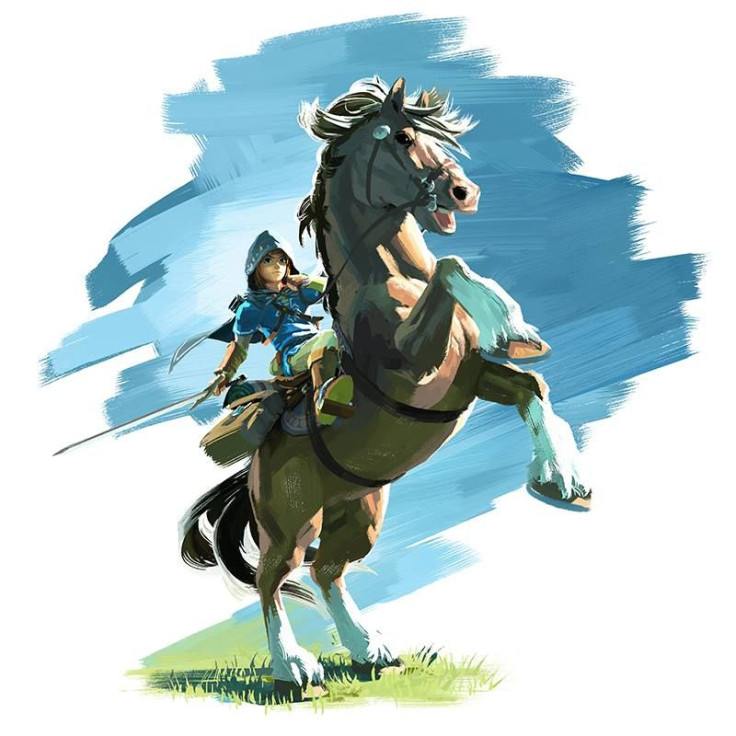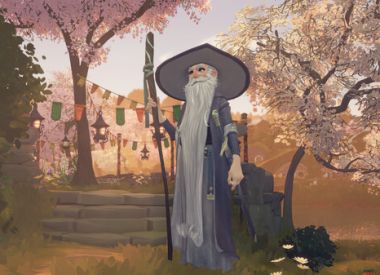To say that I was rapturous after experiencing Legend of Zelda: Breath of the Wild at E3 2016 would be a criminal understatement. The love and attention to detail that glows in every speck of Breath of the Wild made me want to spend a full day and night playing the demo, then leave the LA Convention Center immediately to purchase a Wii U. Another Wii U. Ten Wii Us. (Yes, it’s launching on Nintendo NX also, but we can’t buy those yet. I need Nintendo to know I love them, I’m grateful and I’m ready. Ten times.)
Our patient Nintendo guide had already spent thirteen hours with the Breath of the Wild demo and told us in full sincerity that he discovered new things every time he played. I believe him. The demo was so rich, with so many rock faces to clamber up, so much water to paddle through, so many Bokoblins to kill and so many ruins to wander through, I could easily picture myself spending hours lost in the vast, majestic ruins of post-apocalyptic Hyrule.
In Breath of the Wild, nature has reclaimed iconic architecture like the Temple of Time. Beasts roam hallowed ground, and noble marble pillars lie broken and half-buried by grass that blows gently in the wind. Hyrule is beautiful in its ruins: butterflies (that you can catch) hover around blue and white flowers (that you can mow down) and dust motes float through beams of sunlight.
But what has caused such damage to the familiar world of Hyrule? What cataclysm, what split in the timeline, what disastrous decision led to such wide-ranging consequences? Ganondorf, why are you like this?
In the demo, you don’t see Ganondorf. But you do play through the opening of Breath of the Wild, which starts with Link awakening in the Shrine of Resurrection, a suspiciously high-tech looking place with neon blue glowing everywhere. Shortly afterwards an urgent female voice directs you to pick up the Sheikah Slate, Hyrule’s answer to an iPad that allows you to view a map and select stamps and pins to mark your location.
I use the term iPad advisedly: the Slate, when pressed to a platform, authenticates Link, indicating a level of real technology. There’s a mystery to this anachronism that must surely lie at the heart of Breath of the Wild’s plot, as the rest of Hyrule is so pointedly overgrown and Link’s battle for every survival resource he can find is so fierce. Some new civilization has grown on the overgrown tombstone of Hyrule and inherited all its broken crowns . But what?
My questions aside (and they are numerous), Breath of the Wild has a map twice as large as that of Twilight Princess, a rollicking vastness that takes your breath away when Link leaves the Shrine of Resurrection and the camera pans out and out. If you can see it, you can reach it. In the demo we saw night cycle into day, but dynamic weather will also be a feature, with lightning storms that require Link to put his sword away lest he get struck.
On the ground, bright sparkles indicate that an item can be added to your inventory. Link can take nothing for granted but the thin and well-worn clothes provided in the Shrine before he leaves. Everything he has, he crafts, and he’s more fragile and more responsive to his environment than ever before as a result. A thin shirt won’t cut it in cold weather, weapons have a durability attribute that means they break down and need to be replaced, and, biggest game-changer of all, hearts do not spring up from grass or vases.
In fact, to stay healthy and keep his hearts replenished, Link needs food. Some foods can be eaten in their raw state, but most need to be crafted at a campfire. A slew of recipes is unlockable, but you must craft them first before the recipe is saved in your Hyrulian iPad (and no, Link can’t poison himself).
Components for recipes are abundant, at least in the demo. Mushrooms grow by trees, fruit hangs from branches, and meats are obtained by defeating enemies, who poof into convenient steaks (Bokoblins) or jellies (Chu-chus). The cooking animation is adorable, with food energetically bouncing in huge stone pots to indicate its transformation, and all recipes have flavor text describing their effects in a casual, almost zippy tone.
Enemy weapons are also at your disposal, including clubs, bows, arrows and whatever else they’re swinging. Weapons have flavor text that provide a peek into history. For example, one sword’s text indicates that it was once wielded by a soldier guarding Hyrule Castle. But Hyrule Castle is in ruins now, and how many hands has that sword passed through, and how many have been grimy Bokoblin hands?
Combat felt natural and quick, even with the giant wood axe I used. Hitting the attack button in mid-air caused a truly epic area-of-effect animation that shook the earth and injured the mob of Bokoblins on me, despite the axe’s extreme slowness. It made me not even want to switch to the faster and lighter Bokoblin club because I felt like such a bad-ass with the axe. Bow-and-arrow Link has an advantage too: he can do headshots now for extra crit damage. 360 no-scope Link is on the horizon, folks.
Amiibo functionality will be a part of Breath of the Wild, too. We got a look at the Twilight Princess HD Wolf Link Amiibo, which provides a Wolf Link companion that has however many hearts he had at the end of the bonus dungeon unlocked by using that Amiibo in Twilight Princess HD. Three other Amiibos for Breath of the Wild are en route, featuring Archer Link, Rider Link and a Guardian, whatever that means. Further information on those guys wasn’t part of the demo.
All in all, my impression of Legend of Zelda: Breath of the Wild is of a wide, vast world that feels touchably real, with warm colors, stylish artwork marrying the very best of Twilight Princess and Wind Waker, a mystery promising enough to rival the timeline schism of Ocarina of Time and mechanics that borrow from the very best of open survival RPGs without compromising the Legend of Zelda feel or aesthetic. If the rest of Breath of the Wild is as natural and as compelling as the demo I played, classic status is assured. Nintendo’s doing something very different with Legend of Zelda here, and it’s working. It really is.




![[EG April 19] Best 'Stardew Valley' Mods That Will Change](https://d.player.one/en/full/226012/eg-april-19-best-stardew-valley-mods-that-will-change.png?w=380&h=275&f=955520b8313253ee3c39c791f6210f38)













